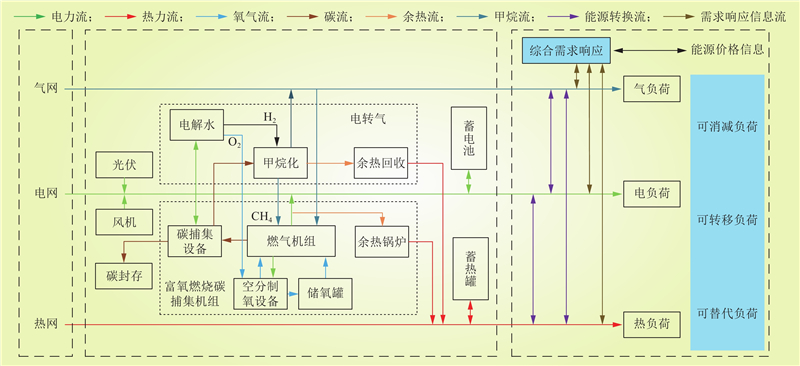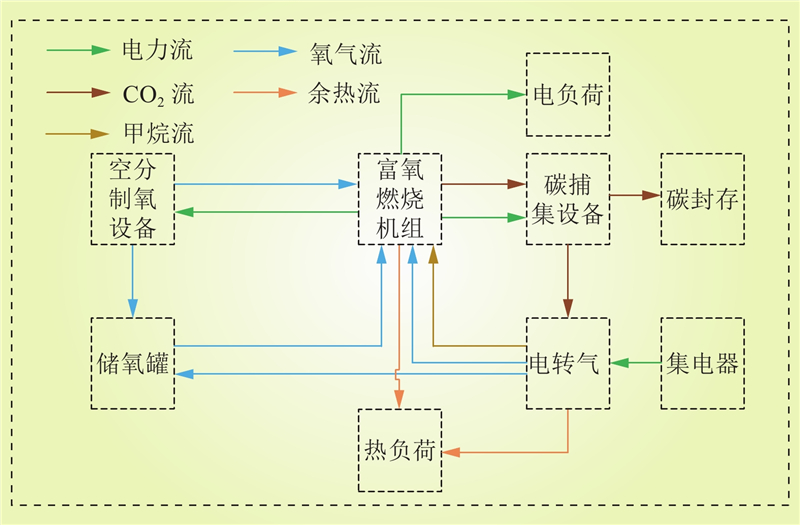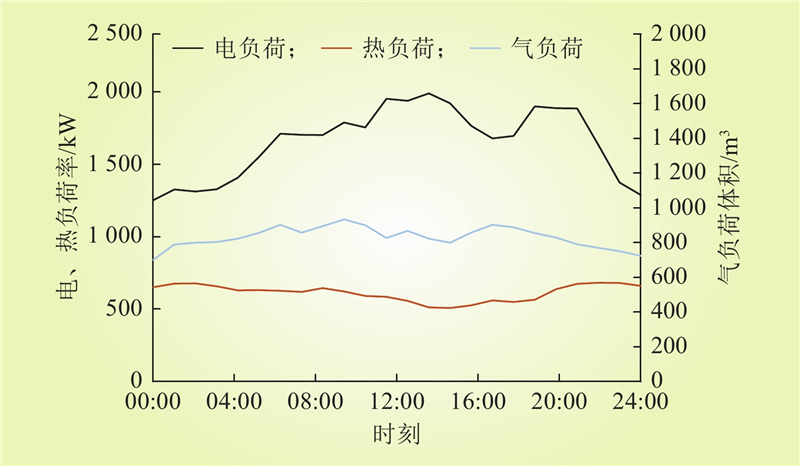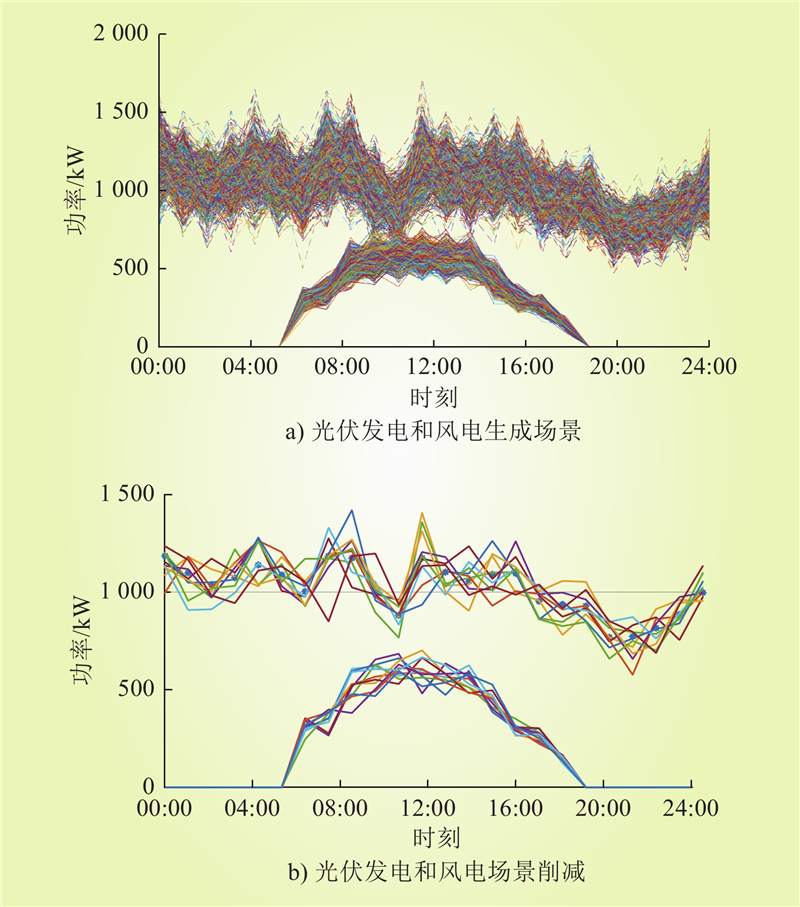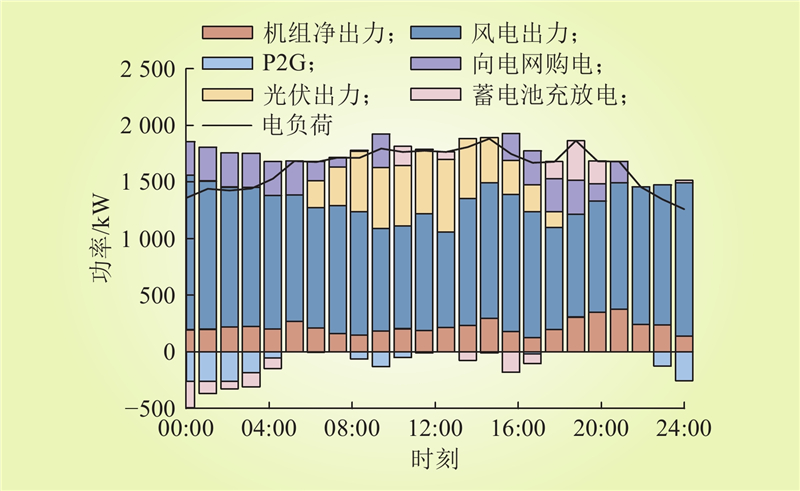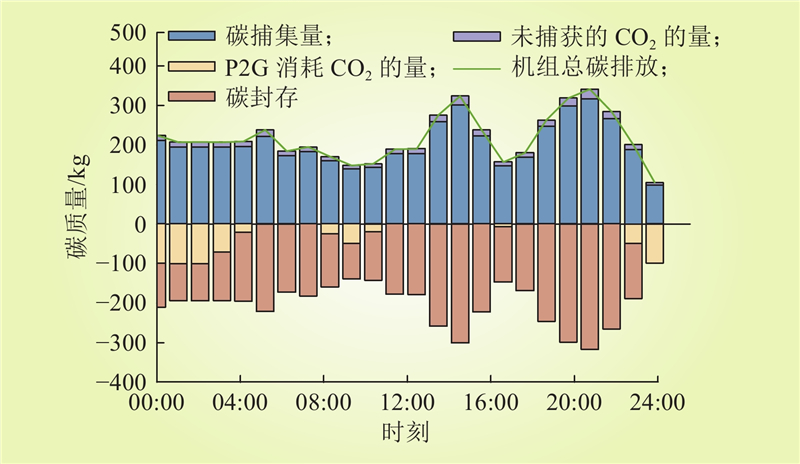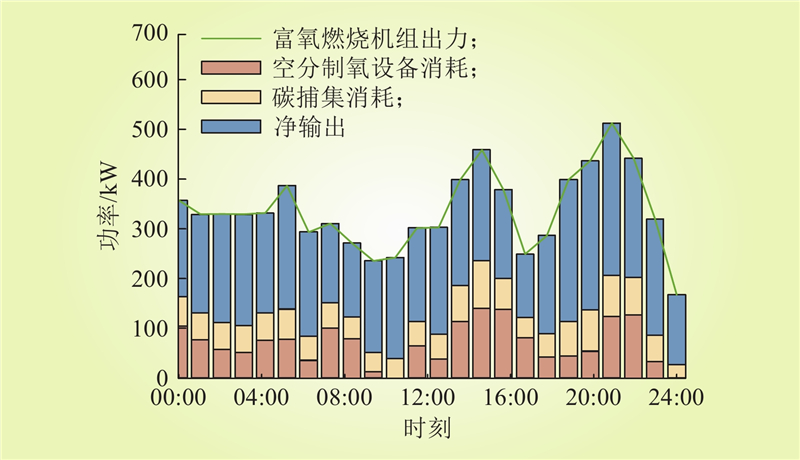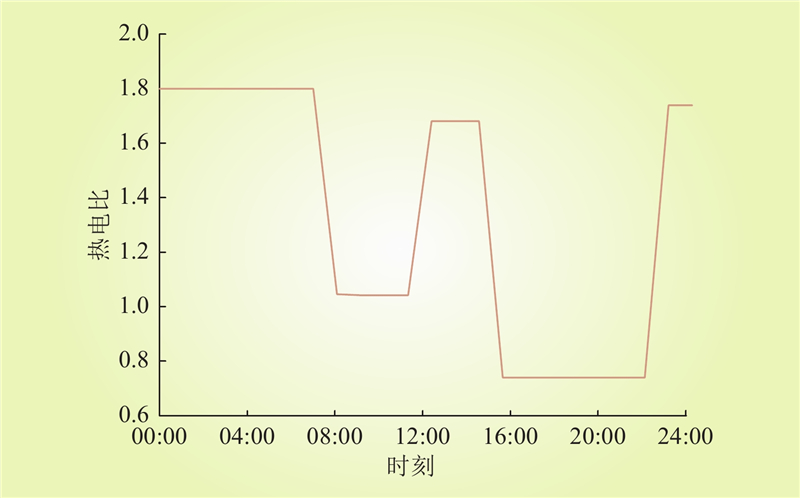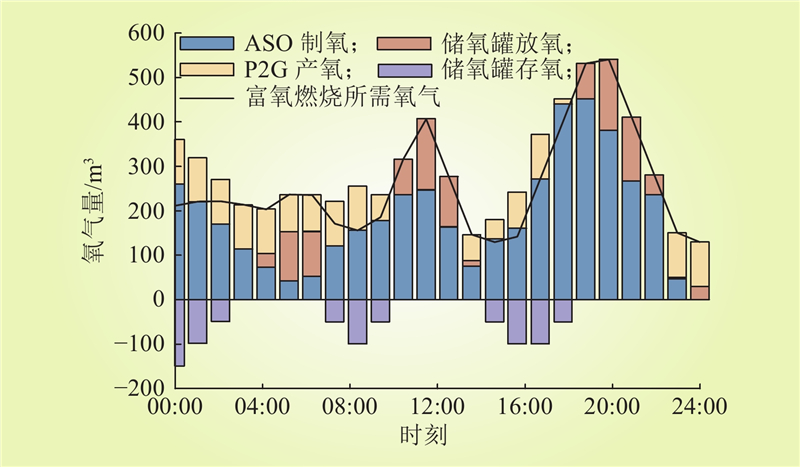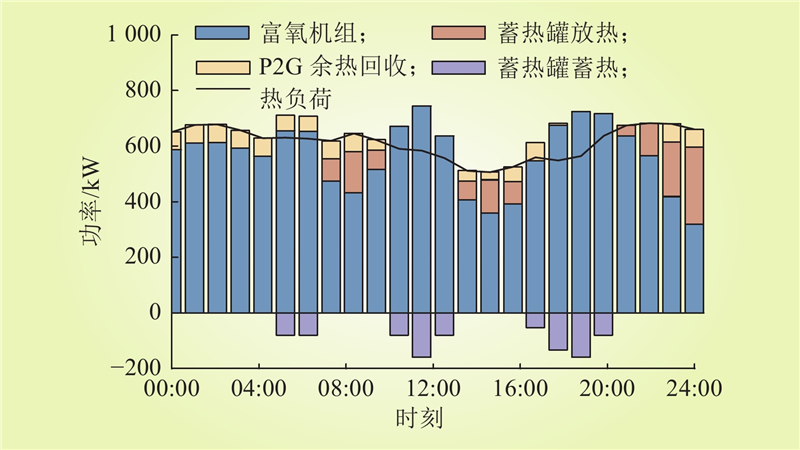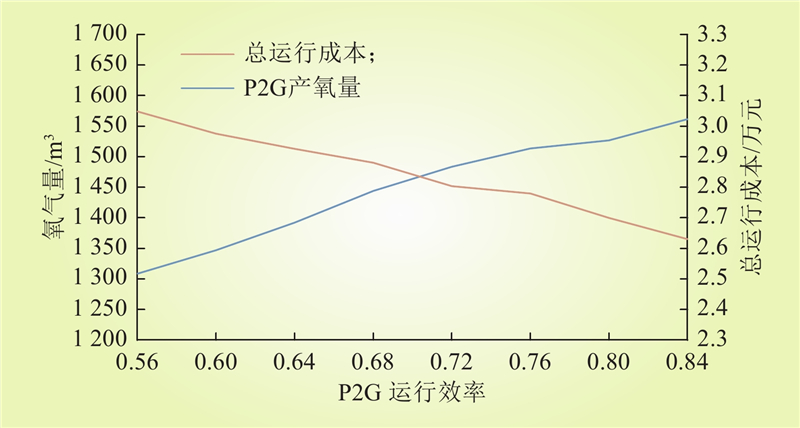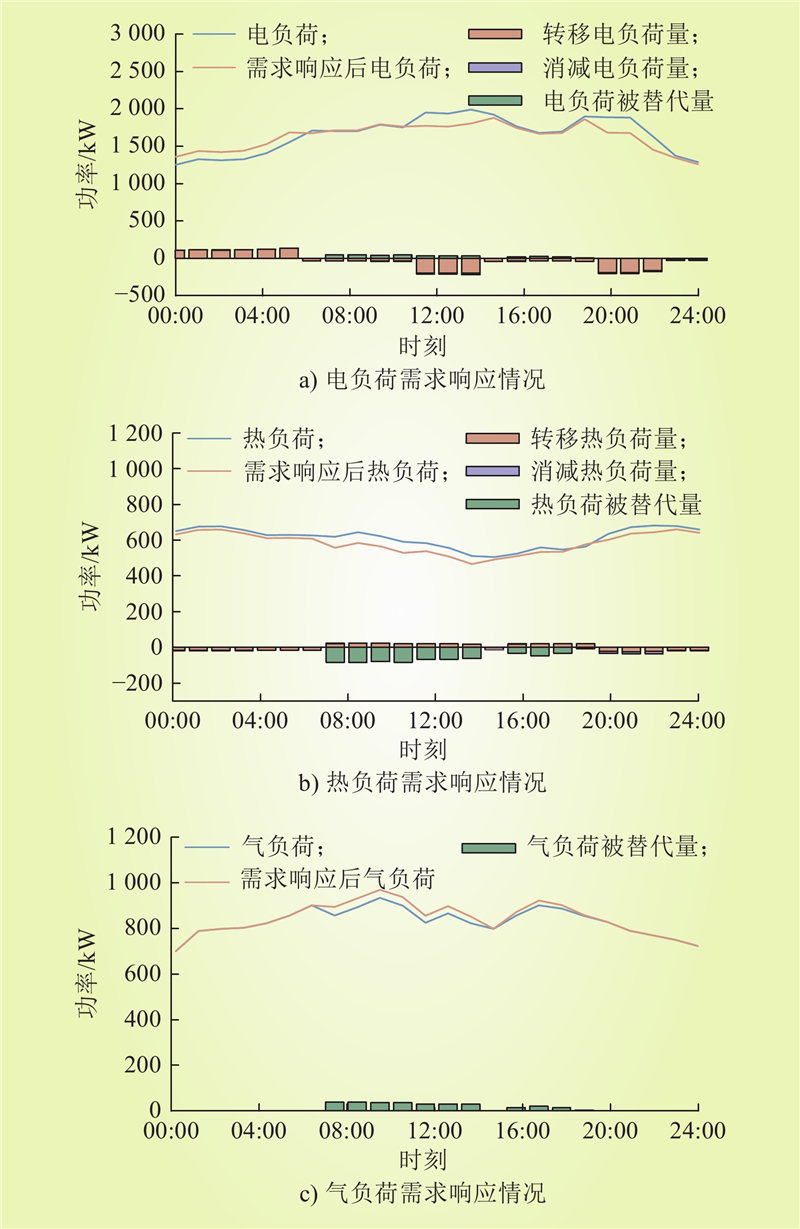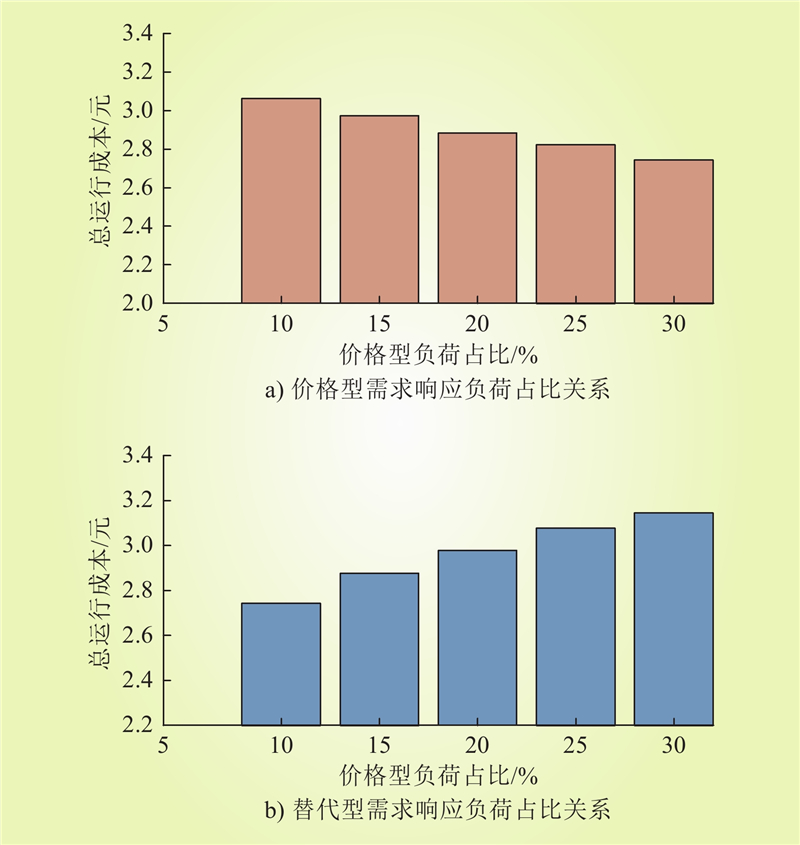| 1 |
张高航, 李凤婷, 周强, 等. 考虑风电并网友好性的日前分层调度计划模型[J]. 电力系统保护与控制, 2019, 47 (6): 118- 124.
|
|
ZHANG Gaohang, LI Fengting, ZHOU Qiang, et al. Day-ahead hierarchical dispatching model considering friendliness of wind power[J]. Power System Protection and Control, 2019, 47 (6): 118- 124.
|
| 2 |
周步祥, 朱文聪, 朱杰, 等. 风光制氢合成氨系统的多时段可调度域分析[J]. 中国电机工程学报, 2024, 44 (1): 160- 174.
|
|
ZHOU Buxiang, ZHU Wencong, ZHU Jie, et al. Multi-stage dispatchable region analysis of wind and solar power-based hydrogen production and ammonia synthesis system[J]. Proceedings of the CSEE, 2024, 44 (1): 160- 174.
|
| 3 |
刘晓军, 聂凡杰, 杨冬锋, 等. 碳捕集电厂-电转气联合运行模式下考虑绿证-碳交易机制的综合能源系统低碳经济调度[J]. 电网技术, 2023, 47 (6): 2207- 2222.
|
|
LIU Xiaojun, NIE Fanjie, YANG Dongfeng, et al. Low carbon economic dispatch of integrated energy systems considering green certificates-carbon trading mechanism under CCPP-P2G joint operation model[J]. Power System Technology, 2023, 47 (6): 2207- 2222.
|
| 4 |
张景淳, 陈胜, 彭琰, 等. 计及灵活爬坡的气-电耦合综合能源系统低碳经济调度研究[J]. 电网技术, 2022, 46 (9): 3315- 3325.
|
|
ZHANG Jingchun, CHEN Sheng, PENG Yan, et al. Low carbon economic scheduling of gas-electric coupling integrated energy system considering flexible ramping products[J]. Power System Technology, 2022, 46 (9): 3315- 3325.
|
| 5 |
崔杨, 谷春池, 付小标, 等. 考虑广义电热需求响应的含碳捕集电厂综合能源系统低碳经济调度[J]. 中国电机工程学报, 2022, 42 (23): 8431- 8446.
|
|
CUI Yang, GU Chunchi, FU Xiaobiao, et al. Low-carbon economic dispatch of integrated energy system with carbon capture power plants considering generalized electric heating demand response[J]. Proceedings of the CSEE, 2022, 42 (23): 8431- 8446.
|
| 6 |
陈登勇, 刘方, 刘帅. 基于阶梯碳交易的含P2G-CCS耦合和燃气掺氢的虚拟电厂优化调度[J]. 电网技术, 2022, 46 (6): 2042- 2054.
|
|
CHEN Dengyong, LIU Fang, LIU Shuai. Optimization of virtual power plant scheduling coupling with P2G-CCS and doped with gas hydrogen based on stepped carbon trading[J]. Power System Technology, 2022, 46 (6): 2042- 2054.
|
| 7 |
崔杨, 邓贵波, 曾鹏, 等. 计及碳捕集电厂低碳特性的含风电电力系统源–荷多时间尺度调度方法[J]. 中国电机工程学报, 2022, 42 (16): 5869- 5886, 6163.
|
|
CUI Yang, DENG Guibo, ZENG Peng, et al. Multi-time scale source-load dispatch method of power system with wind power considering low-carbon characteristics of carbon capture power plant[J]. Proceedings of the CSEE, 2022, 42 (16): 5869- 5886, 6163.
|
| 8 |
米剑锋, 马晓芳. 中国CCUS技术发展趋势分析[J]. 中国电机工程学报, 2019, 39 (9): 2537- 2544.
|
|
MI Jianfeng, MA Xiaofang. Development trend analysis of carbon capture, utilization and storage technology in China[J]. Proceedings of the CSEE, 2019, 39 (9): 2537- 2544.
|
| 9 |
李国庆, 王冲, 雷顺波, 等. 考虑碳捕集技术的电力系统双层优化配置[J]. 电力自动化设备, 2023, 43 (1): 25- 31.
|
|
LI Guoqing, WANG Chong, LEI Shunbo, et al. Bi-level optimal allocation of power system considering carbon capture technology[J]. Electric Power Automation Equipment, 2023, 43 (1): 25- 31.
|
| 10 |
OBOIRIEN B O, NORTH B C, KLEYN T. Techno-economic assessments of oxy-fuel technology for South African coal-fired power stations[J]. Energy, 2014, 66, 550- 555.
DOI
|
| 11 |
张文伟, 王维庆, 樊小朝, 等. 利用风电制氧的富氧燃煤电厂低碳能源系统容量优化配置[J]. 电力系统保护与控制, 2023, 51 (5): 70- 83.
|
|
ZHANG Wenwei, WANG Weiqing, FAN Xiaochao, et al. Optimal capacity configuration of a low carbon energy system of oxygen-enriched coal-fired power plant using wind power to produce oxygen[J]. Power System Protection and Control, 2023, 51 (5): 70- 83.
|
| 12 |
CHEN C M, WU X G, MA J E, et al. Optimal low-carbon scheduling of integrated local energy system considering oxygen-enriched combustion plant and generalized energy storages[J]. IET Renewable Power Generation, 2022, 16 (4): 671- 687.
DOI
|
| 13 |
张一, 李文杰, 吴魁, 等. 含多可控资源的低碳园区自动需求响应优化方法[J]. 广东电力, 2023, 36 (11): 11- 19.
|
|
ZHANG Yi, LI Wenjie, WU Kui, et al. Automatic demand response optimization method for low-carbon parks with multi-controllable resources[J]. Guangdong Electric Power, 2023, 36 (11): 11- 19.
|
| 14 |
WANG Y L, MA Y Z, SONG F H, et al. Economic and efficient multi-objective operation optimization of integrated energy system considering electro-thermal demand response[J]. Energy, 2020, 205, 118022.
DOI
|
| 15 |
张涛, 刘景, 杨晓雷, 等. 计及主/被动需求响应与条件风险价值的微网经济调度[J]. 高电压技术, 2021, 47 (9): 3292- 3304.
|
|
ZHANG Tao, LIU Jing, YANG Xiaolei, et al. Economic dispatch of microgrid considering active/passive demand response and conditional value at risk[J]. High Voltage Engineering, 2021, 47 (9): 3292- 3304.
|
| 16 |
林俐, 蔡雪瑄. 基于风电消纳需求的综合能源服务商源荷协同运行策略[J]. 电网技术, 2019, 43 (7): 2517- 2527.
|
|
LIN Li, CAI Xuexuan. Source-load cooperative operation strategy of integrated energy service provider based on wind power accommodation demand[J]. Power System Technology, 2019, 43 (7): 2517- 2527.
|
| 17 |
CHEN J J, QI B, RONG Z, et al. Multi-energy coordinated microgrid scheduling with integrated demand response for flexibility improvement[J]. Energy, 2021, 217, 11938.
|
| 18 |
杨海柱, 李梦龙, 江昭阳, 等. 考虑需求侧电热气负荷响应的区域综合能源系统优化运行[J]. 电力系统保护与控制, 2020, 48 (10): 30- 37.
|
|
YANG Haizhu, LI Menglong, JIANG Zhaoyang, et al. Optimal operation of regional integrated energy system considering demand side electricity heat and natural-gas loads response[J]. Power System Protection and Control, 2020, 48 (10): 30- 37.
|
| 19 |
崔杨, 闫石, 仲悟之, 等. 含电转气的区域综合能源系统热电优化调度[J]. 电网技术, 2020, 44 (11): 4254- 4264.
|
|
CUI Yang, YAN Shi, ZHONG Wuzhi, et al. Optimal thermoelectric dispatching of regional integrated energy system with power-to-gas[J]. Power System Technology, 2020, 44 (11): 4254- 4264.
|
| 20 |
张定海, 毛宇, 谢勇, 等. 神府烟煤和云南劣质烟煤富氧分级燃烧特性试验研究[J]. 热力发电, 2023, 52 (7): 174- 180.
|
|
ZHANG Dinghai, MAO Yu, XIE Yong, et al. Experimental study on oxyfuel staged combustion characteristics of Shenfu bituminous coal and Yunnan inferior bituminous coal[J]. Thermal Power Generation, 2023, 52 (7): 174- 180.
|
| 21 |
张智羽, 汪欣巍, 陈伟鹏, 等. 富氧燃烧系统余热利用优化及经济性研究[J]. 热力发电, 2019, 48 (10): 84- 91.
|
|
ZHANG Zhiyu, WANG Xinwei, CHEN Weipeng, et al. Optimization and economic study on waste heat utilization for oxygen-enriched combustion system[J]. Thermal Power Generation, 2019, 48 (10): 84- 91.
|
| 22 |
周任军, 肖钧文, 唐夏菲, 等. 电转气消纳新能源与碳捕集电厂碳利用的协调优化[J]. 电力自动化设备, 2018, 38 (7): 61- 67.
|
|
ZHOU Renjun, XIAO Junwen, TANG Xiafei, et al. Coordinated optimization of carbon utilization between power-to-gas renewable energy accommodation and carbon capture power plant[J]. Electric Power Automation Equipment, 2018, 38 (7): 61- 67.
|
| 23 |
施锦月, 许健, 曾博, 等. 基于热电比可调模式的区域综合能源系统双层优化运行[J]. 电网技术, 2016, 40 (10): 2959- 2966.
|
|
SHI Jinyue, XU Jian, ZENG Bo, et al. A bi-level optimal operation for energy hub based on regulating heat-to-electric ratio mode[J]. Power System Technology, 2016, 40 (10): 2959- 2966.
|
| 24 |
陈锦鹏, 胡志坚, 陈颖光, 等. 考虑阶梯式碳交易机制与电制氢的综合能源系统热电优化[J]. 电力自动化设备, 2021, 41 (9): 48- 55.
|
|
CHEN Jinpeng, HU Zhijian, CHEN Yingguang, et al. Thermoelectric optimization of integrated energy system considering ladder-type carbon trading mechanism and electric hydrogen production[J]. Electric Power Automation Equipment, 2021, 41 (9): 48- 55.
|
| 25 |
瞿凯平, 黄琳妮, 余涛, 等. 碳交易机制下多区域综合能源系统的分散调度[J]. 中国电机工程学报, 2018, 38 (3): 697- 707.
|
|
QU Kaiping, HUANG Linni, YU Tao, et al. Decentralized dispatch of multi-area integrated energy systems with carbon trading[J]. Proceedings of the CSEE, 2018, 38 (3): 697- 707.
|
| 26 |
杨欢红, 谢明洋, 黄文焘, 等. 含废物处理的城市综合能源系统低碳经济运行策略[J]. 电网技术, 2021, 45 (9): 3545- 3552.
|
|
YANG Huanhong, XIE Mingyang, HUANG Wentao, et al. Low-carbon economic operation of urban integrated energy system including waste treatment[J]. Power System Technology, 2021, 45 (9): 3545- 3552.
|
| 27 |
秦婷, 刘怀东, 王锦桥, 等. 基于碳交易的电—热—气综合能源系统低碳经济调度[J]. 电力系统自动化, 2018, 42 (14): 8- 13, 22.
DOI
|
|
QIN Ting, LIU Huaidong, WANG Jinqiao, et al. Carbon trading based low-carbon economic dispatch for integrated electricity-heat-gas energy system[J]. Automation of Electric Power Systems, 2018, 42 (14): 8- 13, 22.
DOI
|
| 28 |
初壮, 赵蕾, 孙健浩, 等. 考虑热能动态平衡的含氢储能的综合能源系统热电优化[J]. 电力系统保护与控制, 2023, 51 (3): 1- 12.
|
|
CHU Zhuang, ZHAO Lei, SUN Jianhao, et al. Thermoelectric optimization of an integrated energy system with hydrogen energy storage considering thermal energy dynamic balance[J]. Power System Protection and Control, 2023, 51 (3): 1- 12.
|
| 29 |
VU T T, LIM Y I, SONG D, et al. Techno-economic analysis of ultra-supercritical power plants using air- and oxy-combustion circulating fluidized bed with and without CO2 capture[J]. Energy, 2020, 194, 116855.
DOI
|


